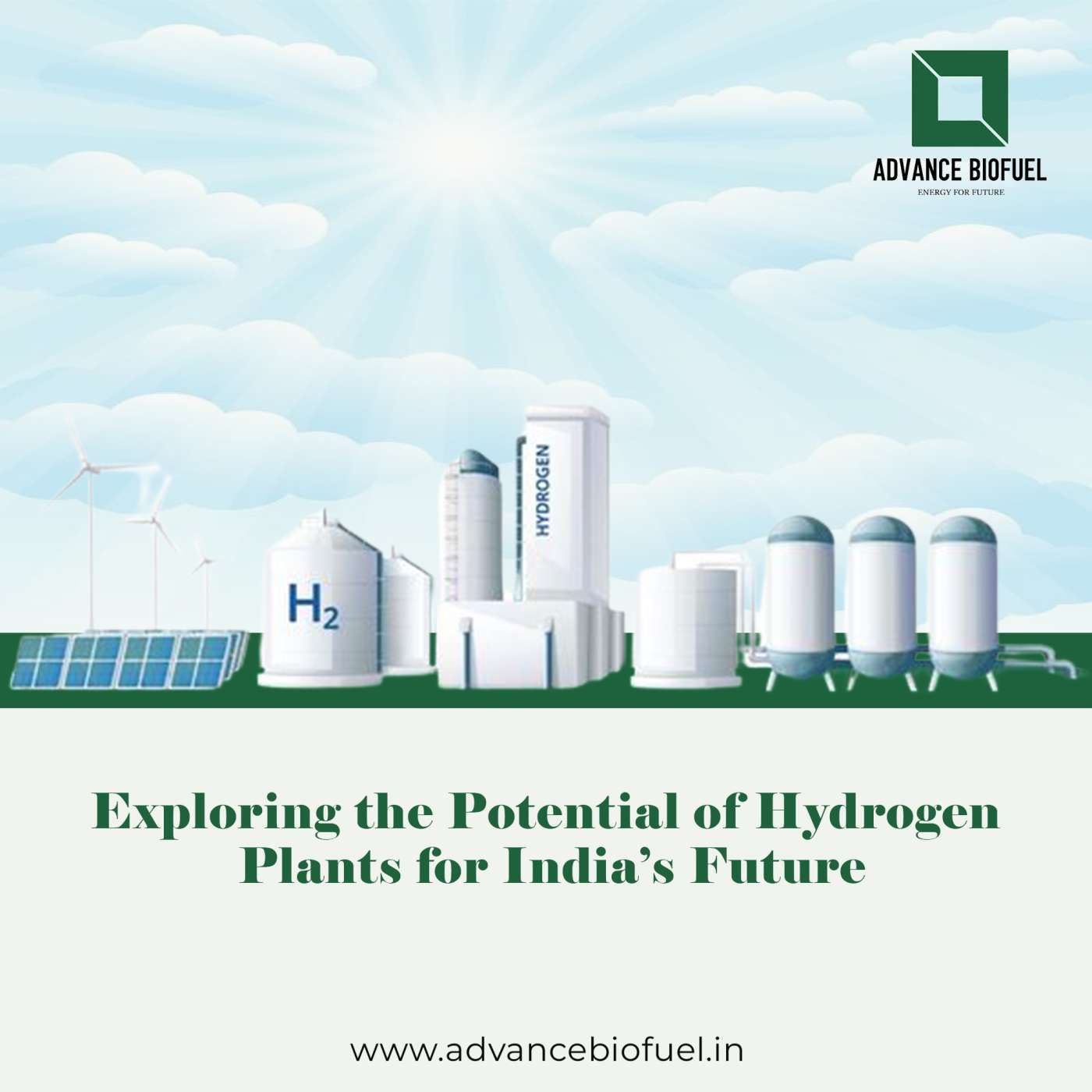The world needs more energy than ever before. Growing demand will require the development of a more sustainable supply and generating system capable of meeting these needs while simultaneously considering CO2 emissions and the overall environmental effect of energy generation. One possible solution is Hydrogen, this unique chance of making is an essential aspect of our clean and secure energy future.
In recent years, there has been an interest in hydrogen as a low-carbon, efficient, and affordable energy source globally. As India deals with its energy demands and environmental issues, hydrogen plants have emerged as a potential game changer. This blog explores the prospects and potential of hydrogen plants in the future landscape of India.
Green Hydrogen Plants can be produced from a variety of domestic resources, such as natural gas, nuclear power, biomass, and renewable power like solar and wind. There are several methods for the production of Hydrogen, the most common methods today are Natural Gas reforming (a Thermal Process), and Electrolysis by using Electrolyzers, Other methods include solar-driven and Biological Processes.
The Rising Demand in India
India has the world’s most affordable objects today, we will have the world’s most affordable Green Energy within this decade. And these solutions will then be exported to other countries, helping them contain carbon emissions,” Ambani noted in Reliance’s 2021-2022 annual report. [1]
In the next 5 to 10 years, green hydrogen will significantly contribute to India’s energy portfolio. First, green hydrogen will support the refinery, fertilizer, and city gas distribution sectors and eventually contribute to other sectors like power, steel, and mobility.
India’s Hydrogen demand for the year 2021 is expected to be 8.5 million tonnes, which is projected to increase to 9.1 million tonnes by the year 2022 and to 11, million tonnes by 2030. the major consumption centers include ammonia production in the fertilizer industry and fuel desulfurization in refineries. [2].
The Promise of Hydrogen Plants as a Clean Energy Source
Hydrogen is the fuel of the future. Hydrogen Plants indicate immense potential as a future renewable and secure energy source. It can be produced by renewable energy sources, which contributes to low-carbon emissions and economically promotes self-reliance. As a result, it can utilize renewable energy resources in various forms, such as fuel or industry feedstock, and has the potential to replace fossil fuels obtained from fertilizer production and petroleum refining.
These qualities make it the best alternative fuel option for transportation and electricity generation applications. It can be used in Cars, in House, for Portable Power, and in many more applications. Hydrogen is an Energy Carrier that can be used to store transport easily and deliver energy produced from other sources. Hydrogen Fuel Plants play a pivotal role in shaping a cleaner, more secure energy landscape for the world.
Cost and Scalability Challenges
India is the world’s largest energy consumer, and it is striving for renewable alternatives to fulfill its ever-growing needs. Green Hydrogen emerges as the ultimate solution in the current stage, with the potential to modify the energy circumstance.
The production cost of Hydrogen Plants is skyrocketing. Significantly, the cost is more than the current price of conventional hydrogen derived from fossil fuels. The reason might be the expensive electrolysis procedure, which requires the production of hydrogen from renewable energy resources.
Another challenge confronting Hydrogen Plants is a lack of infrastructure to support the process, from production to distribution and storage. However, we are financially constrained as a result of a lack of capital investment in partnerships between the private and public sectors.
Government Initiatives and Future Prospects
India has defined the goal of becoming energy-independent by 2047 and achieving Net Zero by 2070. To achieve this target, the Government of India is helping to support by creating initiatives. Green Hydrogen is considered a promising alternative for enabling this transition.
The National Green Hydrogen Mission was approved by the Union Cabinet on 4 January 2022, with the intended objectives of making India a leading producer and supplier of Green Hydrogen in the world, creating Export opportunities for Green Hydrogen, Reduction in dependence on imported fossil fuels and feedstock, Development of indigenous manufacturing capabilities. Attracting Investments and business opportunities for the industry, Creating opportunities for employment and economic development, and Supporting R&D projects. [3]
In the National Hydrogen Mission, the Ministry of Power notified the first phase of the Green Hydrogen/Green Ammonia policy on February 17. It aims to facilitate Green Hydrogen production in India by easing the process. [4] currently, India’s demand for Hydrogen is expected to be approximately 12 MMTPA, implying that Green Hydrogen will need to account for 80-100% of the additional requirement. [5]
Conclusion
Hydrogen has tremendous potential as a clean and sustainable fuel for India’s future. As a result of its zero emissions, it is an influential player in the global transition to a low-carbon economy. As India embraces hydrogen, it not only initiates the way for a greener future, but it also strengthens its energy security and contributes to global climate change efforts. The journey may be difficult, but the benefits of a Hydrogen-powered Inida are worthwhile.


